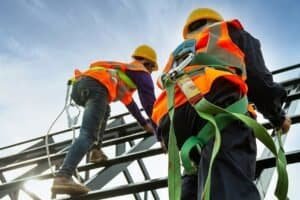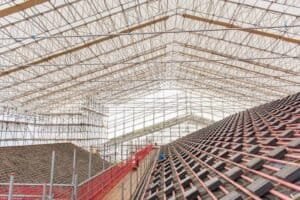مقدمة
In construction, temporary edge protection is more than just a precaution – it’s a frontline defense against serious injuries and fatalities. With global demand for safer work environments, especially on elevated or exposed platforms, the need for standardized safety measures is increasingly urgent. Enter BS EN 13374, the European benchmark for evaluating and regulating edge protection systems on temporary worksites.
This standard sets clear criteria for design, performance, and testing, helping engineers, project managers, and scaffold manufacturers ensure consistent, reliable protection. Whether you’re working on a high-rise slab or sloped roofing, understanding this standard is crucial.
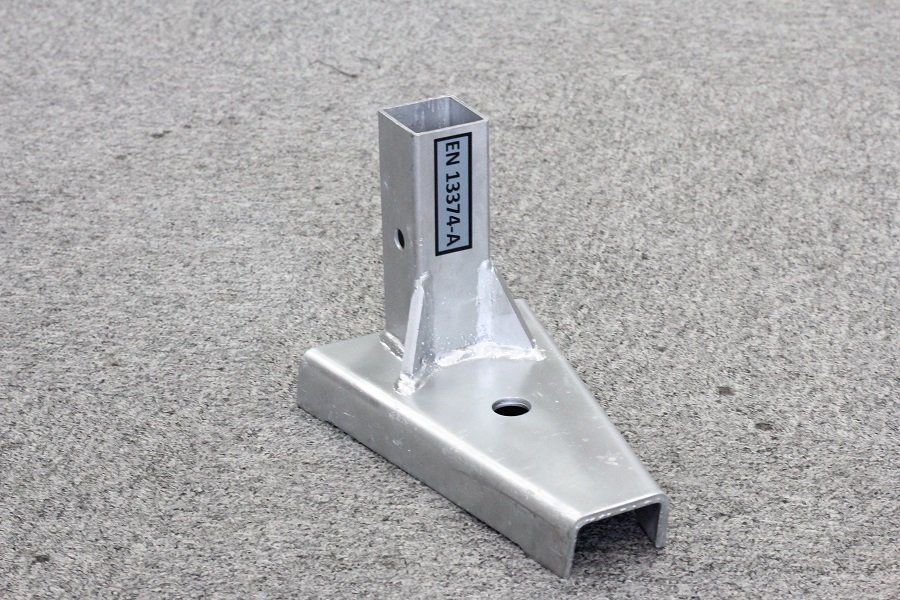
What is BS EN 13374?
Technical Scope and Objectives
BS EN 13374 is a harmonized European standard developed by the European Committee for Standardization (CEN). It applies specifically to temporary edge protection systems (TEPS) used in construction and defines the requirements for design, testing, and classification.
The standard aims to:
- Minimize the risk of falls from height on temporary structures
- Establish consistent performance criteria for static and dynamic loading
- Provide a basis for third-party certification and regulatory compliance
System Components and Applications
BS EN 13374 applies to edge protection systems such as:
- Guardrails (top, intermediate)
- Toe boards
- Mesh barriers
- Support posts and anchorage devices
It governs their use on temporary platforms, concrete slabs, formwork edges, roof decks, and other elevated surfaces under construction where permanent fall protection has not yet been installed.

Classification of Edge Protection Systems: Classes A, B, and C
Class A – Static Load Protection
Class A systems are designed for scenarios with minimal movement and no dynamic impact. These are installed on surfaces with a slope up to 10° and must resist static loads such as leaning or pushing.
Key requirements:
- Must withstand a static horizontal load (typically 30-60 kg)
- Often used in general-purpose construction sites and slab edges
Class B – Intermediate Dynamic Resistance
Class B covers applications with some risk of dynamic impact, such as workers stumbling or moving materials near the edge. These systems are suitable for surfaces inclined up to 30°.
Key features:
- Must pass both static and limited dynamic load tests
- Typically used on roof decks or platforms with slight inclines
Class C – Full Fall Arrest Functionality
Class C systems are the most robust, designed to arrest a fall rather than just prevent it. These systems must resist significant dynamic impact forces and are intended for slopes between 30° and 60°.
Critical features:
- Must pass high-energy dynamic drop tests
- Ideal for steep-sloped roofing or scaffold structures where fall potential is high
Testing and Performance Requirements under BS EN 13374
Compliance with BS EN 13374 is based on rigorous lab and field tests:
- Static Load Testing: Horizontal and vertical force application to verify structural strength and stiffness.
- Dynamic Testing: Drop weight tests simulating a human fall impact, required for Classes B and C.
- Anchorage Testing: Measures the reliability of posts and connectors under stress.
- Dimensional Accuracy: Ensures consistent height (typically 1.0m min.), spacing, and component alignment.
- System Stability: Tests full assemblies under combined loading conditions, including wind and worker activity.
These tests ensure systems are not only theoretically safe but also reliable under real-world construction scenarios.
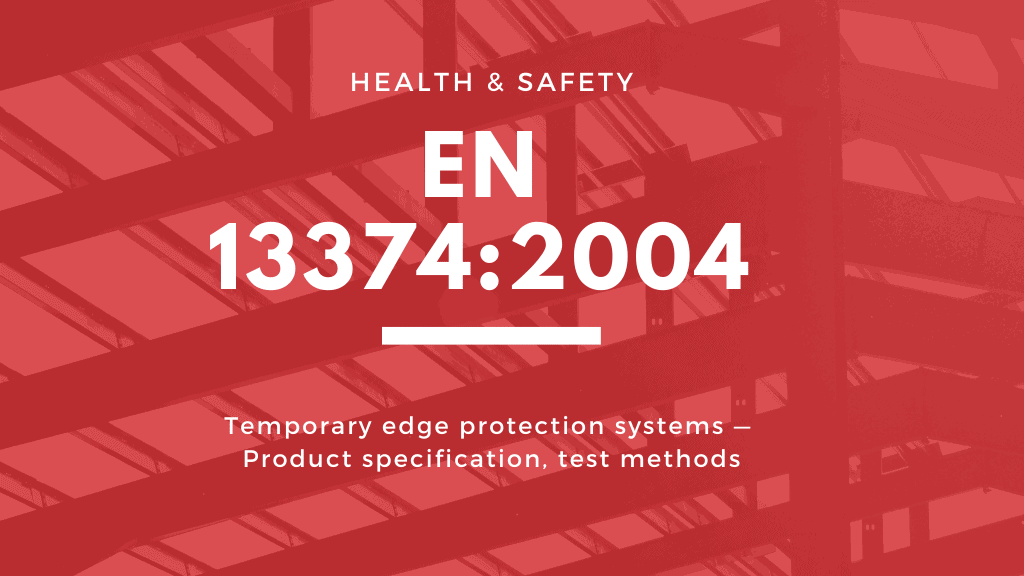
BS EN 13374 Versions and Revisions Over Time
Historical Versions (2004 to 2013+A1:2018)
- BS EN 13374:2004 was the original release, establishing the foundation for standardized temporary edge protection in Europe.
- BS EN 13374:2013 and its A1:2018 amendment introduced refinements in classification logic, testing setups, and material specifications.
2025 Edition – Key Technical Updates
Released in May 2025, BS EN 13374:2025 supersedes all previous versions. It brings significant technical improvements:
- Clearer and more practical definitions of Classes A, B, and C
- Enhanced dynamic impact test protocols with updated load profiles
- New documentation standards for traceability and inspection readiness
- Improved alignment with other standards such as ISO 14122 and AS/NZS 4994.1
Importance of Version Adherence
Staying up to date with the latest version is essential:
- Clients and regulators may require 2025 compliance in procurement documents
- Older systems may no longer meet revised safety expectations
- Demonstrates commitment to current best practices and legal defensibility
Why BS EN 13374 Compliance Matters in Practice
Regulatory Alignment
BS EN 13374 ensures conformity with key EU Directives (such as the Temporary Works Directive and Work at Height Directive), and is frequently referenced in UK CDM (Construction Design and Management) regulations. This makes it a standard requirement in public infrastructure projects, large-scale developments, and international tenders that demand verifiable safety credentials.
Worker Safety
Edge protection systems designed to BS EN 13374 significantly reduce the probability and severity of fall-related incidents. By addressing both static and dynamic fall scenarios, the standard supports a proactive approach to site safety, minimizing injury risks and ensuring workers are protected in both standard and high-risk conditions.
Commercial Credibility
Adopting systems tested to BS EN 13374 standards signals professionalism and technical reliability. Contractors and subcontractors who specify compliant systems are viewed more favorably by international clients, safety auditors, and project managers seeking consistent, certified safety solutions.
Risk Mitigation
Using certified systems minimizes exposure to health and safety violations, insurance claims, and worksite stoppages. It also provides legal defensibility in the event of an incident, as documentation of compliance to an internationally recognized standard can substantiate due diligence.
Global Export Readiness
For manufacturers, compliance with BS EN 13374 (especially the 2025 revision) is crucial for accessing regulated markets in Europe, the Middle East, Australia, and parts of Southeast Asia. Export-ready documentation and conformity assessments enhance product acceptability and reduce delays at customs or during procurement reviews.
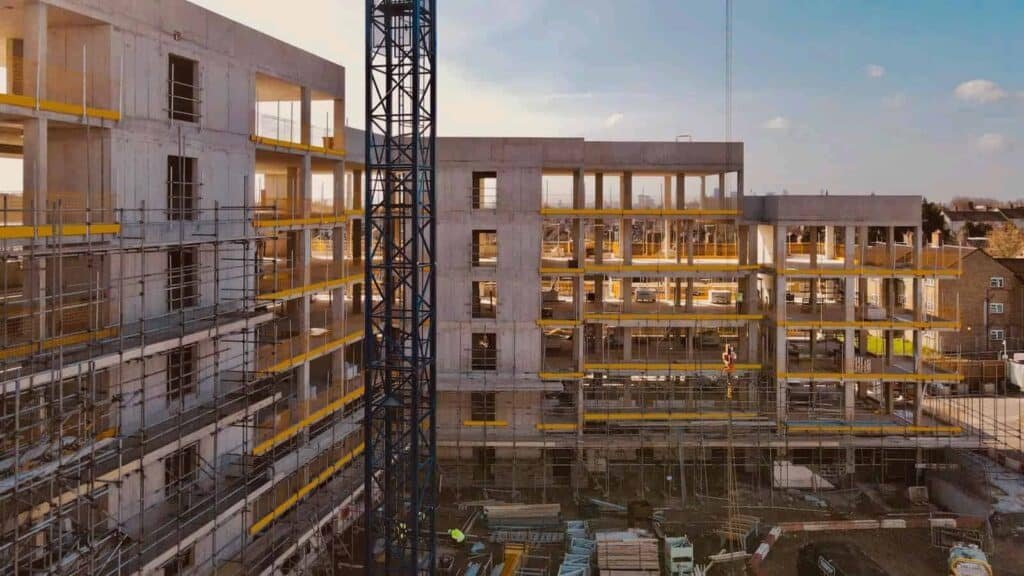
خاتمة
BS EN 13374 sets rigorous performance standards for temporary edge protection systems by classifying them into three categories (A, B, C) based on expected load scenarios and surface inclinations. The 2025 revision introduces a modernized, risk-based framework that better aligns with actual jobsite conditions, enhancing both safety outcomes and regulatory clarity. For contractors, engineers, and safety professionals, staying compliant with this latest standard is critical for ensuring site safety, meeting international requirements, and maintaining a competitive edge in the construction industry.
👉 Next up: Read our detailed breakdown of the new 2025 edition here: BS EN 13374:2025 – Updated Standard for Edge Protection





